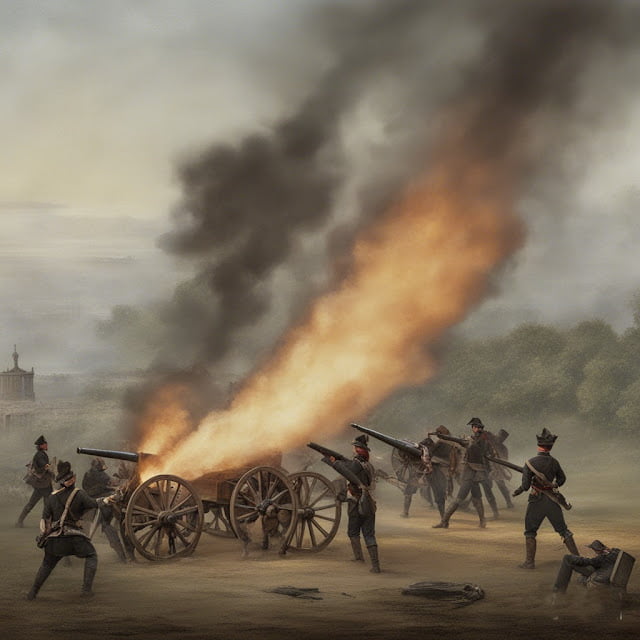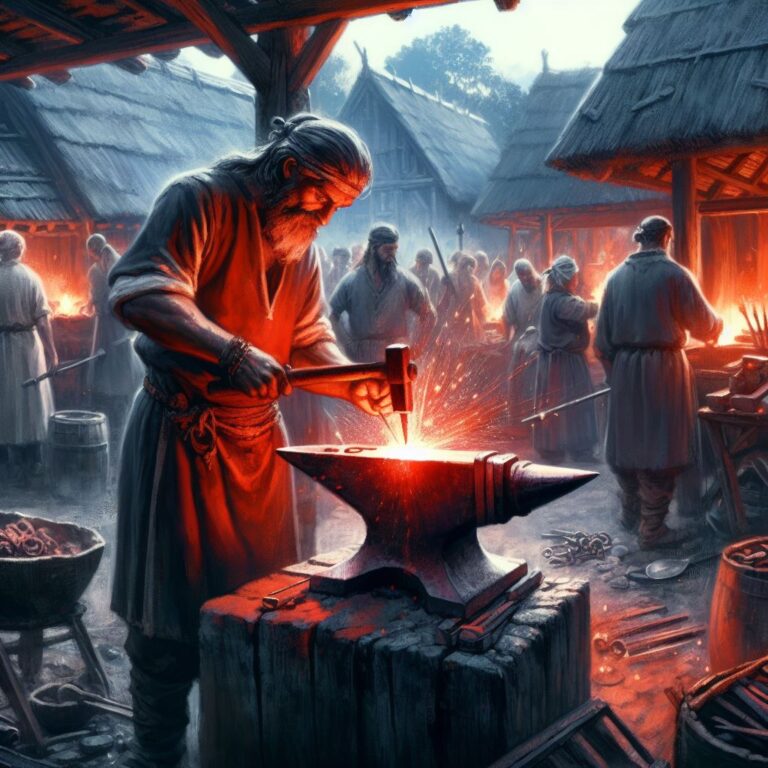The invention of wheel has always been considered one of the most important innovations in human history. It has revolutionized transportation and allowed the development of complex societies and civilizations. Wheel and wheeled vehicles were the most important innovation in the late Copper Age (3000-3500BC). From ancient carts to modern vehicles, the invention of wheel is significant for countless technologies enabling agricultural expansion and the development of sophisticated machinery.
But how and when was the wheel discovered, Unlike the airplane which was inspired by flying birds, or solar cells inspired by plant leaves, there are no examples of wheels in the natural world. What impact did it have on human civilization? Let us find out.
Origin of Wheel
The origins of the wheel are a mystery, as it was likely invented long before written records existed. Before the invention of wheel humans had developed many things like the settlement of civilization, the invention of agriculture, and the domestication of animals. But the discovery of the wheel has yet to come, researchers say the reason behind it would be the existence of the wheel in a natural phenomenon.
The known oldest mention of a wheeled vehicle comes from a carving in Mesopotamia dating back to around 3500 BCE. However, the wheel was likely invented much earlier, possibly as far back as 4000-4500 BCE in the Eurasian Steppe. Below are some important findings by archeologists.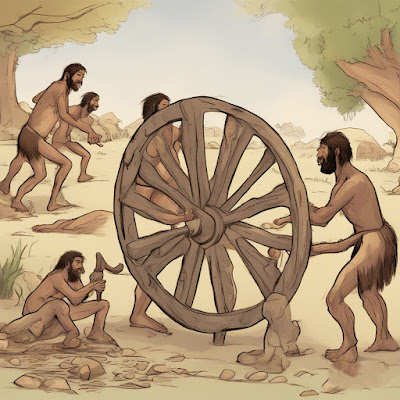
4500-4000 B.C.: Mesopotamia – The Potter’s Spin Cycle:
- Evidence: Clay tablets and excavated remains of simple wooden discs with axles, used for spinning pottery.
- Significance: These mark the earliest known rotating platforms, laying the groundwork for future wheeled technologies.
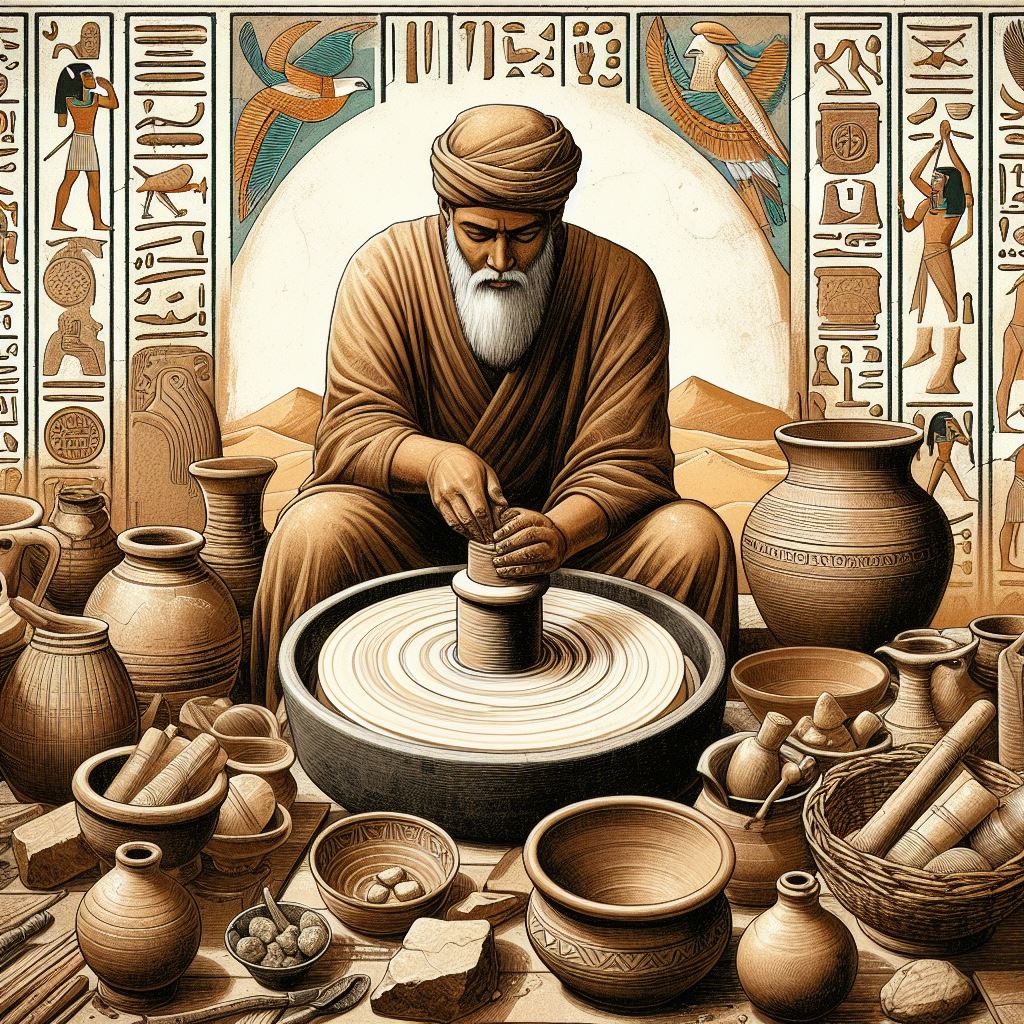
Further Exploration
- Moorey, P. R. (1994). Ancient Mesopotamian materials and industries: The archaeometry of Mesopotamia from agrovillages to urban centers. Oxford University Press. (This book discusses the use of early pottery-making tools in Mesopotamia)
- Forest, Jean-Claude. (1990). Daily life in the ancient world. [English translation] Barnes & Noble. (This book provides context on the development of crafts and technologies in ancient Mesopotamia)
3500 B.C.: Mesopotamia and the Indus Valley Civilization – Rolling into Transportation:
- Evidence: Clay tablets, wagon models, and cylinder seals depicting solid wooden discs attached to axles, suggesting the use of carts.
- Significance: This marks the earliest clear indication of wheeled vehicles for transportation, revolutionizing trade and movement.
Further Exploration
- Salvini, Mirjo. (2008). Mesopotamia and the Indus Valley. Cambridge University Press. (This book explores the cultural and technological connections between Mesopotamia and the Indus Valley Civilization)
- Wright, Rita P. (2010). The ancient Indus Valley. Cambridge University Press. (This book details the development of transportation technologies in the Indus Valley Civilization)
- Yoffee, Norman. (2005). Mythologies of the ancient world. Cambridge University Press. (This book provides insights into the role of wheeled vehicles in early societies, including their depiction in art and iconography)
3300 B.C.: Maikop Culture (Caucasus Mountains) – Chariots Take the Stage:
- Evidence: Burial mounds containing dismantled chariots offer the earliest known examples of these war machines.
- Significance: Chariots transformed warfare, offering increased mobility and power, and influenced cultural and social structures.
Further Exploration
- Kuzmina, Elena E. (2007). The prehistory of the Silk Road. Oxford University Press. (This book explores the development of wheeled vehicles in the Caucasus region, including the Maikop culture)
- Haak, Wolfgang. (2017). The spread of domestic animals in Europe and the Near East: New light from DNA, isotopes and archaeological evidence. Proceedings of the National Academy of Sciences, 114(47), E10000-E10008. (This research paper discusses the impact of wheeled vehicles on the spread of domesticated animals)
2900-2000 B.C.: Mesopotamia and the Indus Valley Civilization – Spoke Revolution:
- Evidence: Archaeological finds and artistic representations of wheels with spokes, a revolutionary innovation that improved efficiency and load capacity.
- Significance: The spoke wheel enabled faster, lighter vehicles, further boosting trade, travel, and military capabilities.
Further Exploration
- Dales, George F. (1964). The Balakot pottery. Expedition, 6(3), 37-46. (This article details the archaeological finds of spoked wheels in the Indus Valley Civilization)
- Moorey, P. R. (1994). Ancient Mesopotamian materials and industries: The archaeometry of Mesopotamia from agrovillages to urban centers. Oxford University Press. (This book discusses the technological advancements in wheel-making materials in Mesopotamia)
2000-1000 B.C.: Europe and the Eurasian Steppes – Wheels Spread Westward:
- Evidence: Archaeological finds of wagons, chariots, and pottery wheels across Europe and Central Asia, indicate widespread adoption of the technology.
- Significance: The wheel facilitated trade, cultural exchange, and migration, shaping the development of European societies.
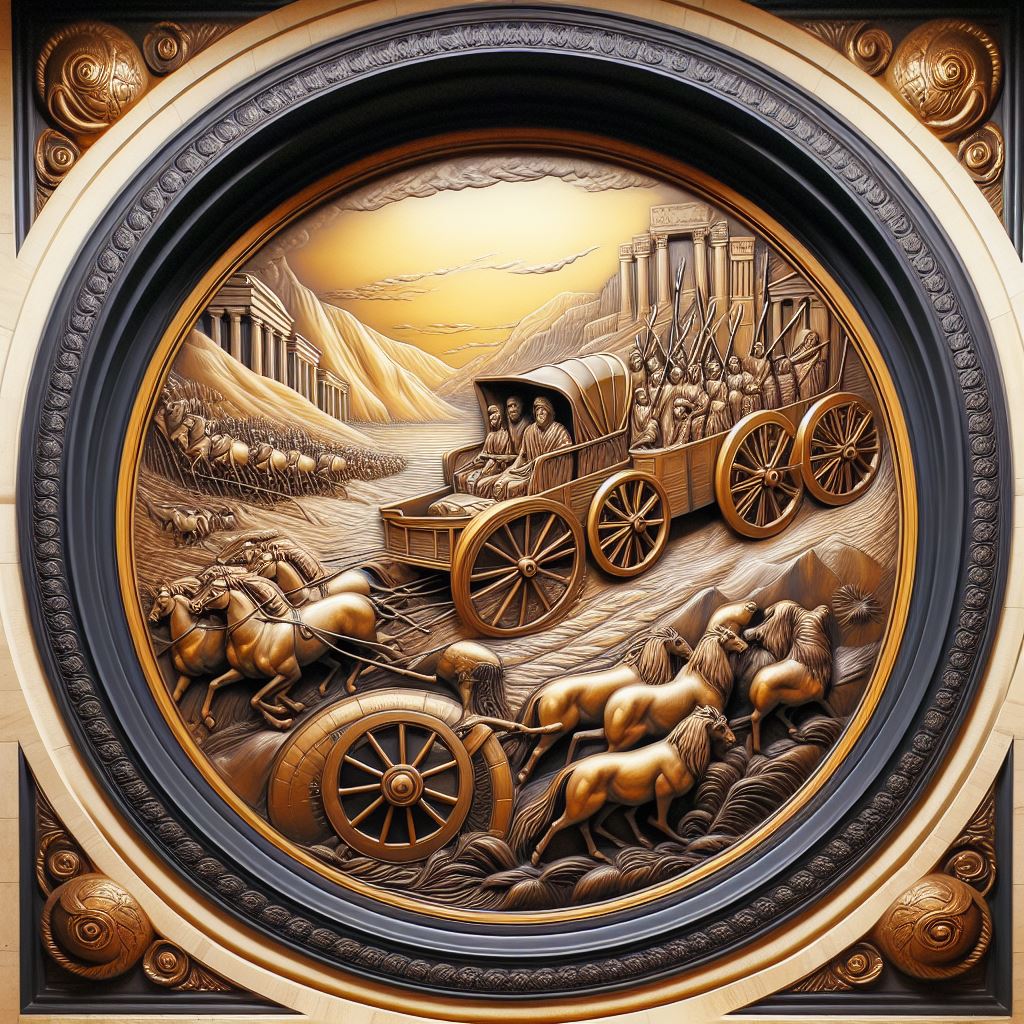
Further Exploration
- Anthony, David W. (2007). The horse, the wheel, and language: How Bronze-Age riders from the Eurasian steppes shaped the modern world. Princeton University Press. (This book explores the spread of wheeled vehicles from the Eurasian steppes into Europe)
- Rizzini, Irene. (1987). The diffusion of the wheel in Europe. Journal of Indo-European Studies, 15(1-2), 189-212. (This article discusses the archaeological evidence for the adoption of wheeled vehicles in Europe)
This is just the beginning of the wheel’s remarkable journey. Remember, the timeline is constantly evolving as discoveries are made. Further research can delve deeper into specific regions, explore the social and cultural impact of the wheel, and even investigate earlier possible precursors to this transformative technology.
Invention of Wheel and Wheeled vehicles
Inspired by Nature: The Birth of Wheel
The invention of wheel was a significant advancement in human history, and observations of natural phenomena inspired it. Here are some examples of natural occurrences that may have influenced the invention of the wheel:
Rolling Logs:
Early humans likely observed the way logs or tree trunks would roll downhill effortlessly. This could have inspired them to create a circular object that could roll more smoothly and efficiently.
 |
| Rolling Logs |
River Stones:
Rounded stones found in riverbeds could have served as natural models for the wheel. These stones are smooth and naturally shaped by the flow of water, making them easy to roll.
Fruit and Nuts:
Fruits like coconuts and nuts have a round shape and are known to roll when they fall from trees. This behavior might have led to the idea of using a circular object for transportation and other purposes.
Tumbleweeds:
Tumbleweeds, like the ones we often see rolling across arid landscapes, are dried-up plants that break loose from their roots and are carried by the wind. Although tumbleweeds themselves aren’t directly related to the invention of the wheel, they share the fundamental concept of rolling. The wheel, a human invention from ancient times, introduced the transformative idea of circular motion. Observing natural occurrences like the rolling tumbleweeds may have inspired early humans to explore and develop the practical applications of circular motion, leading to the invention of the wheel that revolutionized transportation and machinery.

Animal Movement:
Observing the way certain animals, like armadillos and dung beetles, roll themselves or objects in a circular motion could have inspired humans to create rolling mechanisms.
 |
| Dung Beetle |
These natural occurrences likely served as inspiration for early humans as they developed the concept of the wheel. Over time, this simple yet ingenious invention revolutionized transportation, agriculture, and countless other aspects of human civilization. The first wheels were solid disks made from materials like wood, stones, or clay, rather than the spoked wheels that we are familiar with today. These wheels were used to transport goods and people over shorter distances. The development of metallurgy that spoked wheels became possible, it made wheels lighter than earlier which increased speed and efficiency in transportation.
Mechanical Concepts:
Natural phenomena like windstorms, where objects are moved by rolling or spinning, may have sparked the idea of using circular motion as a source of power.
Circular Rotation:
- The fundamental mechanical concept of the wheel lies in its circular rotation around an axle. This design minimizes friction compared to linearly dragging objects. That’s the magic of the wheel – its circular rotation replaces friction with smooth gliding. The rounded rim distributes the weight over a larger area, minimizing the force needed to move the object.
Reduction of Friction:
- The wheel’s circular shape reduces friction between the object and the ground. This is particularly advantageous when rolling heavy loads. This makes it incredibly efficient for transporting heavy loads, whether it’s a farmer pulling a cart full of vegetables or a ship captain navigating a cargo vessel.
Efficient Transmission of Motion:
- The wheel, when connected to an axle, allows efficient transmission of motion. This is crucial for various applications, from simple carts to complex machinery. Picture a potter’s wheel – the kick on the wheel translates into smooth rotations, shaping clay with ease. This principle applies to countless machines, from bicycles and cars to wind turbines and gear systems. The axle, acting as a fulcrum, converts force applied at one point into rotational motion at another, making the wheel a versatile tool for transmitting power and performing work.
Stability:
- The rotational motion of a wheel provides stability, especially when compared to other methods of transportation or load-bearing. Compared to dragging or carrying objects, wheels provide a much more stable platform. Think of a car navigating uneven terrain – the wheels absorb bumps and adjust to changes in the ground, keeping the vehicle balanced and in control. This stability is crucial for transportation, construction, and countless other applications where precise and controlled movement is essential.
Although the invention of the wheel was a very important step in the development of human civilization, it did not happen in isolation, it was part of a broader process of continuous innovation and technological advancement that took place throughout the ancient world. For example, the development of metallurgy (Steel & Brass inventions), agriculture, and writing were all crucial factors in the origin of complex societies and the growth of civilization.
How the discovery of the wheel has changed Human history
The discovery of the wheel is considered one of the most significant innovations in human history. Below are some ways in which the discovery of the wheel has changed human history:
Transportation:
Prior to the wheel, transportation relied on human and animal labor for carrying and dragging loads. This restricted travel distances, trade, and the expansion of civilizations. The following are some methods used for the transportation of goods:
- Carrying loads on backs or shoulders
- Dragging objects on sleds or rollers
- Using pack animals like donkeys or oxen
- Employing water transport via boats and rafts
The discovery of the wheel made transportation easier and more efficient. It has made it possible to transport heavy goods over long distances with greater efficiency. It also allowed humans
to travel faster and farther than ever before. It made the movement of goods and people more efficient and changed the course of the development of trade and commerce. The wheel’s principles extended to maritime navigation with the development of rudders and steering mechanisms for ships, enabling more precise control and exploration of waterways.
Agriculture:
Before the birth of the wheel, agriculture was a backbreaking endeavor confined to small plots close to settlements. Sowing, reaping, and transporting crops relied on human and animal muscle power, limiting yields and hindering growth. But then came the unassuming circle – the wheel – and with it, a complete transformation of farming landscapes and practices.
The introduction of wheeled carts and plows significantly reduced the burden on farmers. Heavy grains could be easily hauled from fields to storage, freeing up manpower for other tasks. Plows pulled by oxen or horses tilled larger swathes of land, increasing cultivation area and potential yields. Wheeled transportation streamlined every step of the agricultural process. Fertilizers and manure could be distributed across fields far more efficiently, improving soil quality and crop health. Harvested crops could be transported to markets and centers of trade with greater speed and less spoilage, boosting profits and accessibility.
As agricultural productivity soared, it spurred the development of specialized professions. Grain milling and baking could be centralized, fostering the growth of towns and cities near productive farmland. This, in turn, fueled further innovation in tools, irrigation systems, and storage techniques.
Industry:
The first application of the wheel apart from moving things is the pottery wheel and used for grinding grains and other cooking-related things. The wheel is also used to power machines, such as mills, saws, looms, and other types of equipment. Flywheel is another important application, it is a mechanical device that stores rotational energy. It is essentially a rotating wheel or disk with a significant moment of inertia, designed to efficiently store and release energy in various applications. This caused the development of industry and manufacturing, which in turn resulted in the creation of new jobs, businesses, and the growth of cities. Wheels are also used in different forms with time, we can see their usage in simple machines, the development of gears, windmills & many other applications.
Warfare:
Chariots and siege engines, two examples of more effective combat machines, were made possible by the development of the wheel. Carts helped to move faster on the battlefield & siege engines were used to destroy big doors, walls & fortifications. Armies gained a major tactical edge due to the development of these machines.
Apart from transportation and warfare, the wheel had some other important applications too. It was used in the development of pottery, as the potter’s wheel allowed for the production of
more uniform and efficient vessels. The wheel was also used in many types of machinery, such as water mills, water pumps for irrigation, and windmills, which were crucial for grinding grain and other agricultural equipment.
Article by Smithsonian Magzine-Salute to the Wheel
Despite its significance, the wheel was not immediately adopted by all civilizations. Before European settlers arrived in the Americas in the 15th century the wheel was not being used there, and even then, it was more frequently used for transportation than for mechanical purposes. Some historians argue that the slow adoption of the wheel in the Americas might have been caused by a lack of domesticated animals which to pull carts and wagons.
Conclusion
In conclusion, the discovery of the wheel was an important step in the development of human civilization. It has revolutionized transportation, warfare, pottery, and machinery, allowing trade networks and complex societies to grow. Although its origins are not clear it is clear that the wheel was a product of a broader process of innovation and technological advancement that occurred throughout the ancient world. Today, the wheel is a symbol of human progress and creativity, and it continues to play a crucial role in modern transportation
and machinery advancements.
Before the wheel, transportation was fully dependent on human or animal power, which was slow and inefficient. The discovery of wheels allowed the development of carts and Wagons which made it possible to carry the larger load more efficiently over long distances. It also has made travel faster. As a result of this humans started traveling over larger distances, developing trading Networks.
Love writing about various topics! Check out my other blogs for more interesting reads. Thanks for reading.





